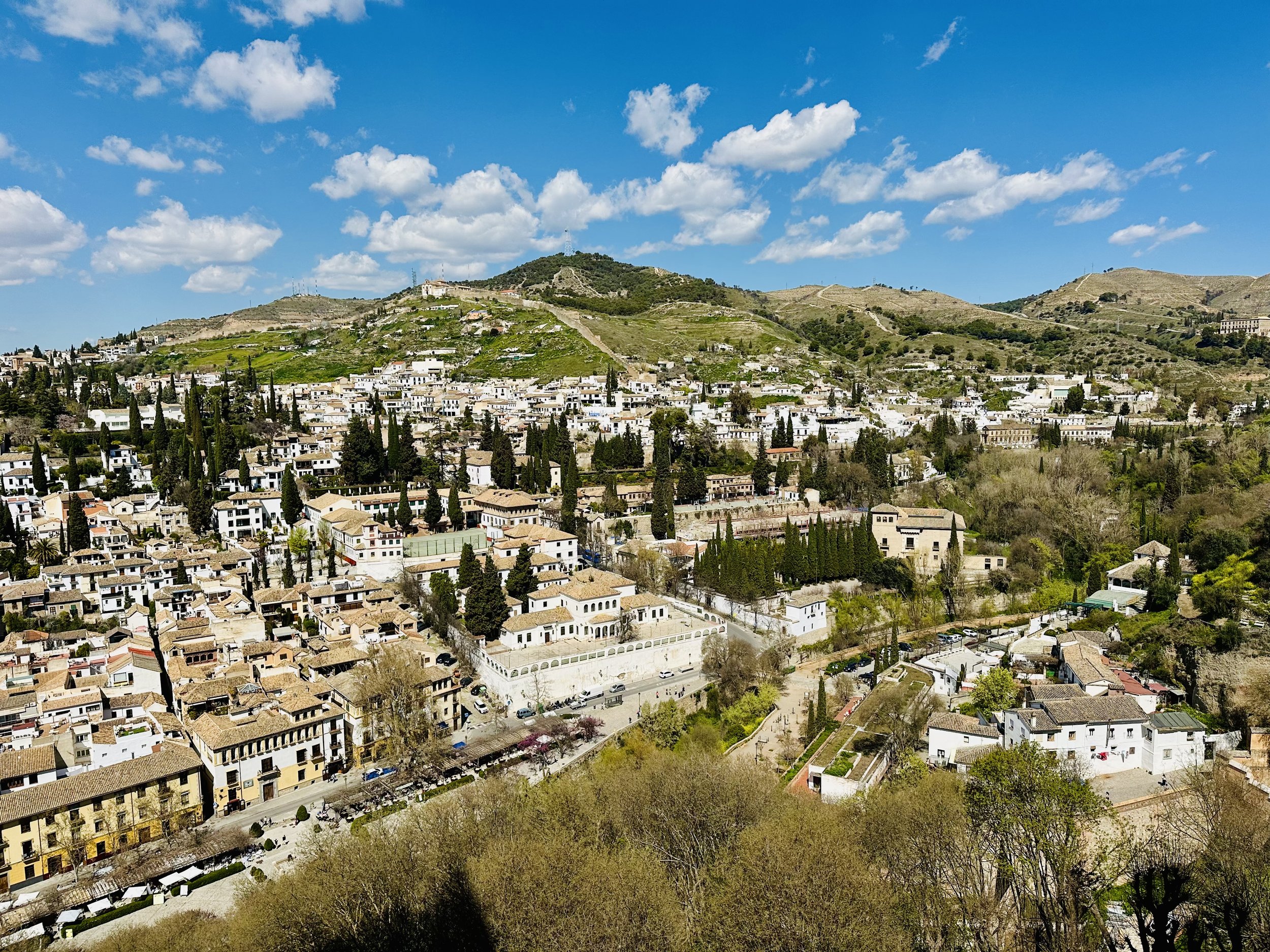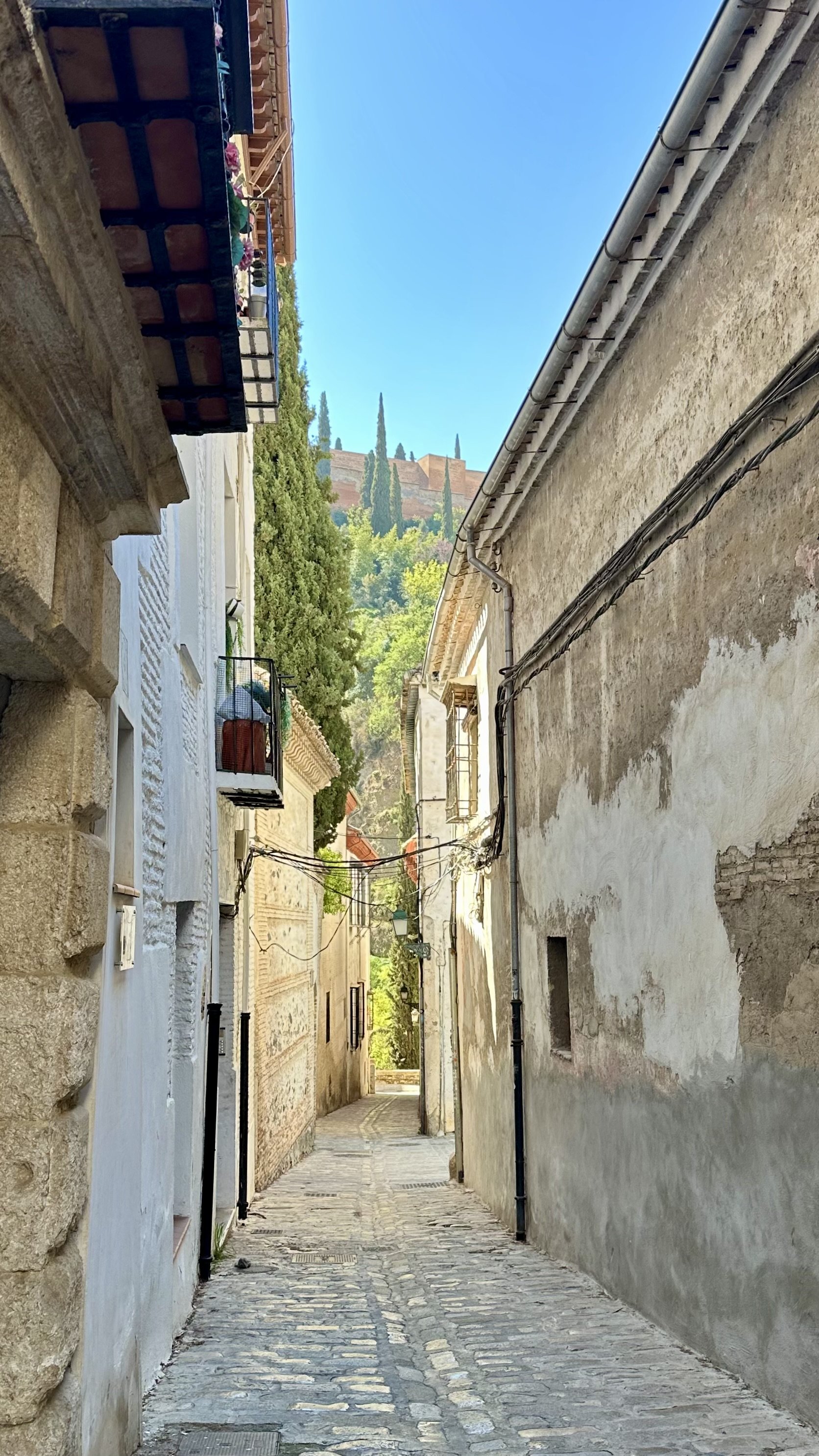Sacromonte
After an amazing day touring the Alhambra and its splendid palaces, we wanted to see something different. We decided to explore Sacromonte, Granada’s Roma (Gypsy*) Quarter. From the Alhambra, we could see the whitewashed homes of Sacromonte on the hill beyond the Albayzín.
We walked down from the Alhambra, along the Darro River, and up into the maze of narrow streets in Albayzín, as we had the day before. This time, we walked further and higher, stopping frequently to admire the changing views of the Alhambra.
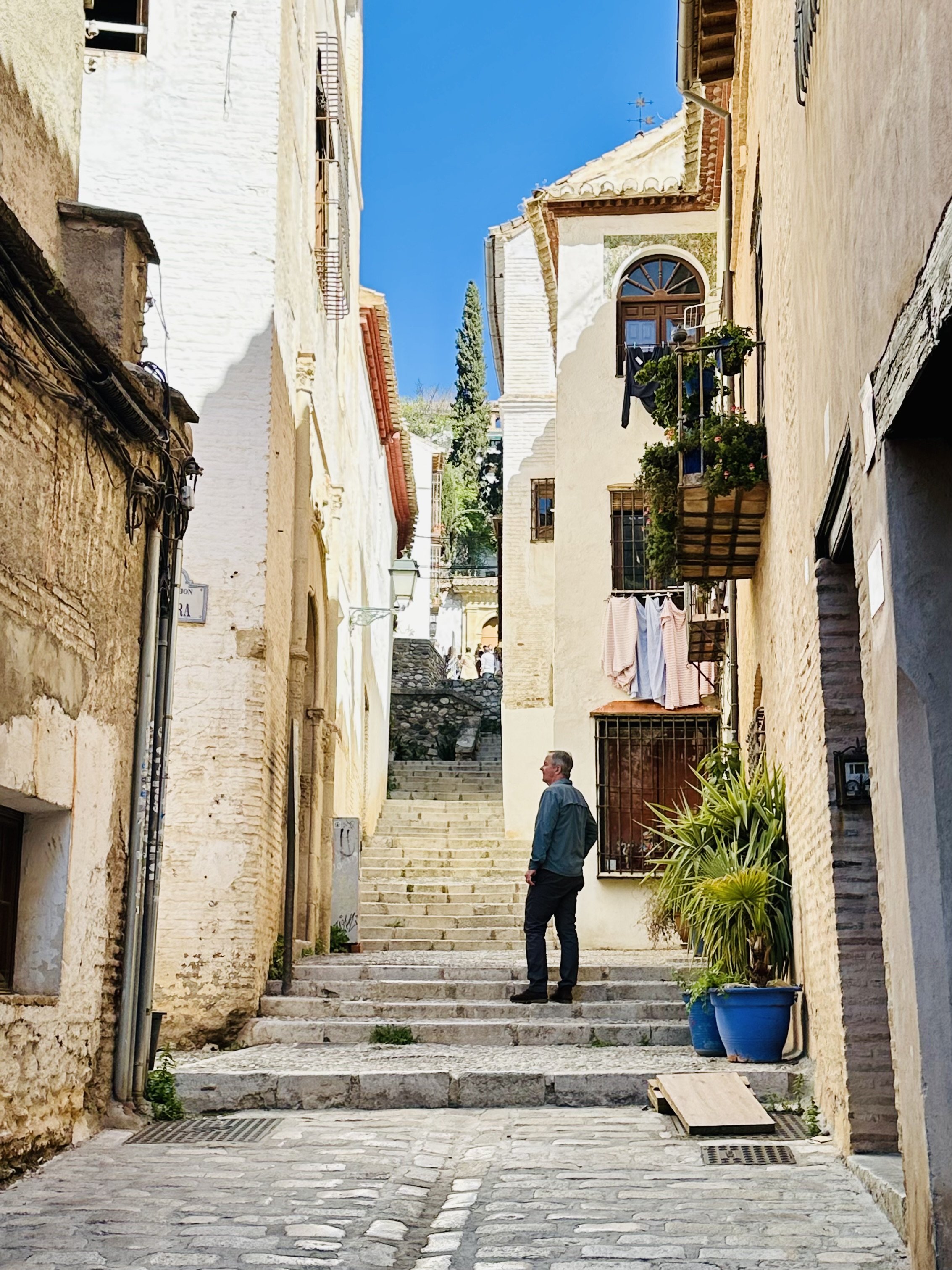

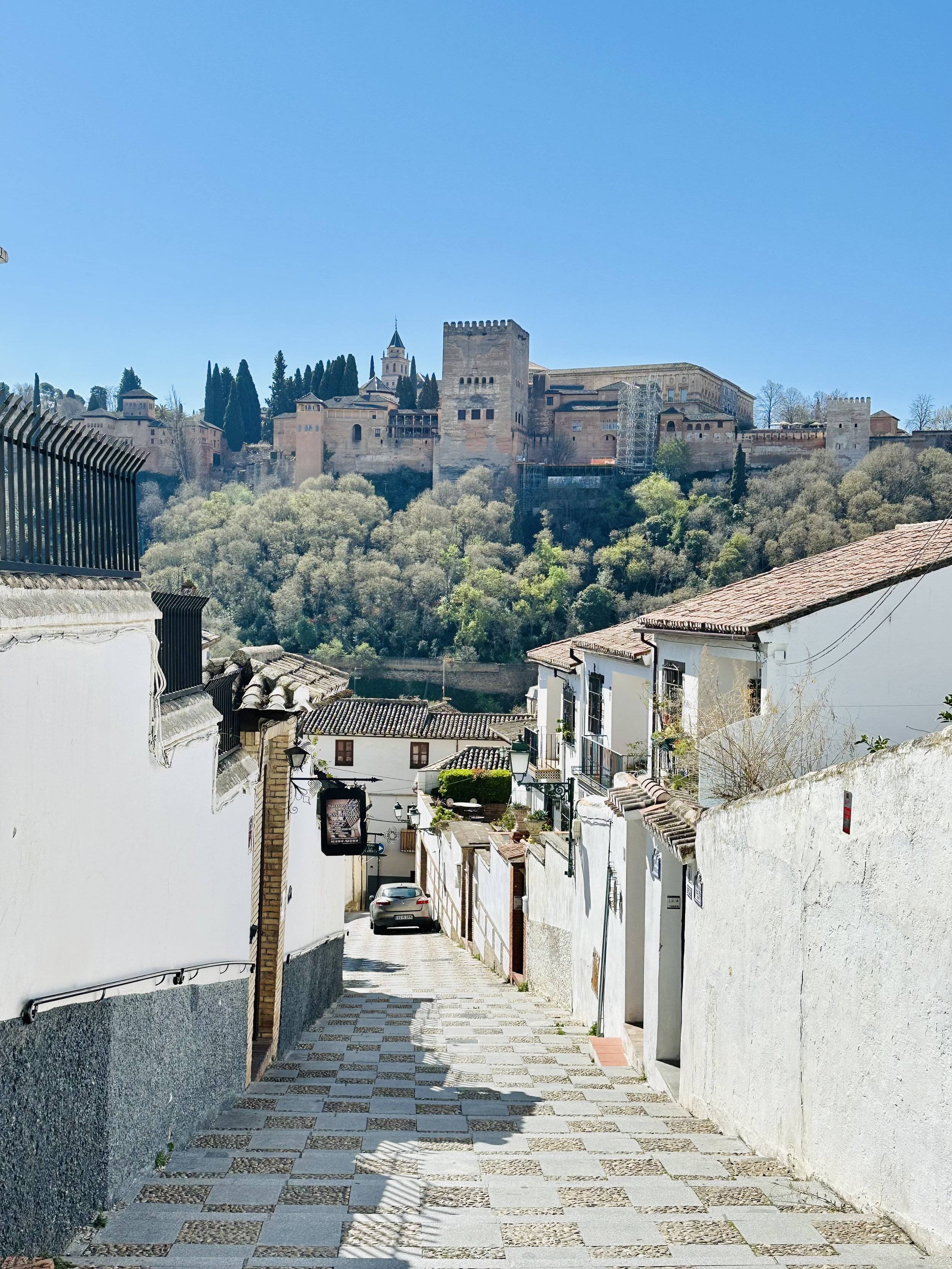
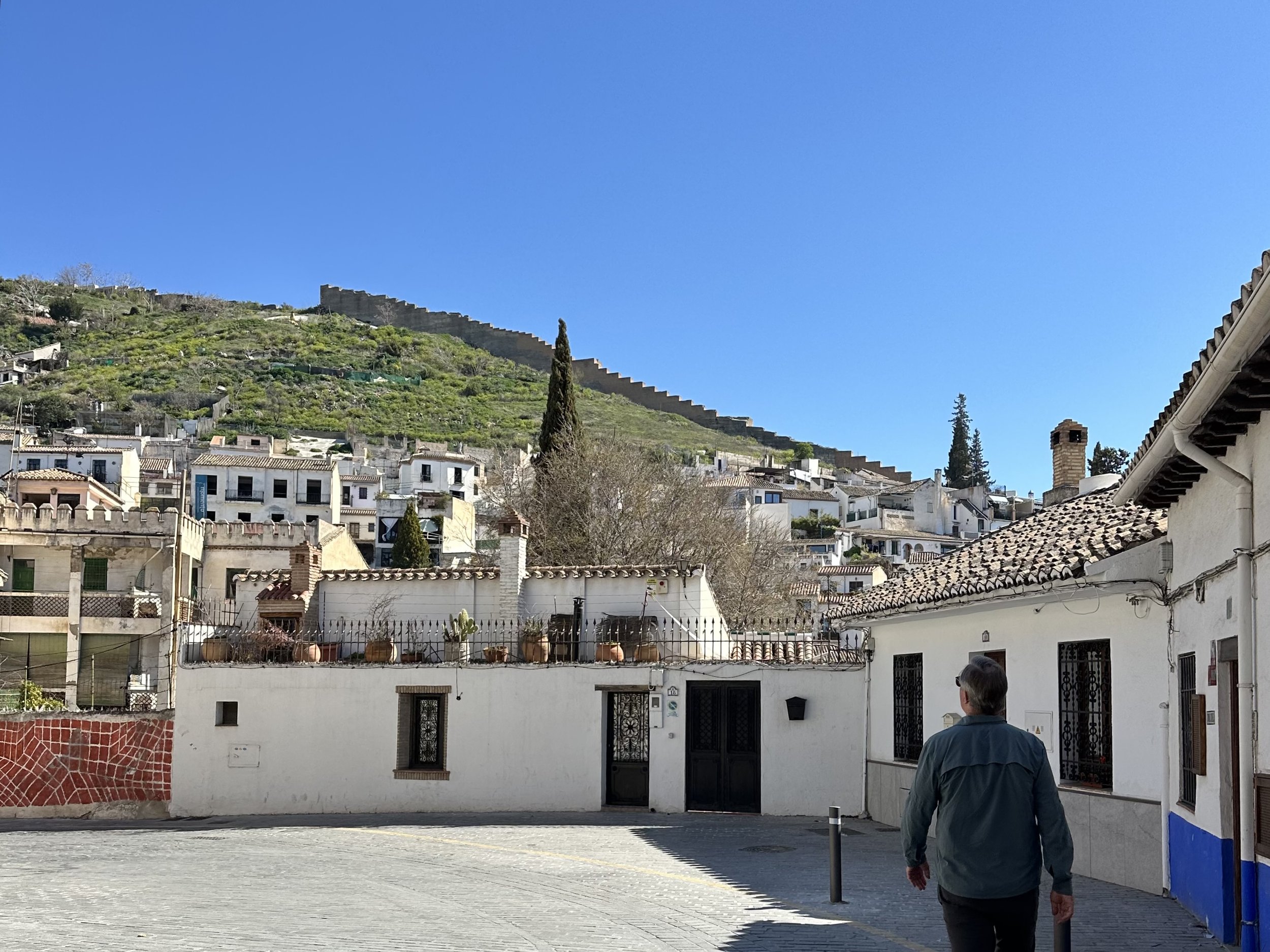
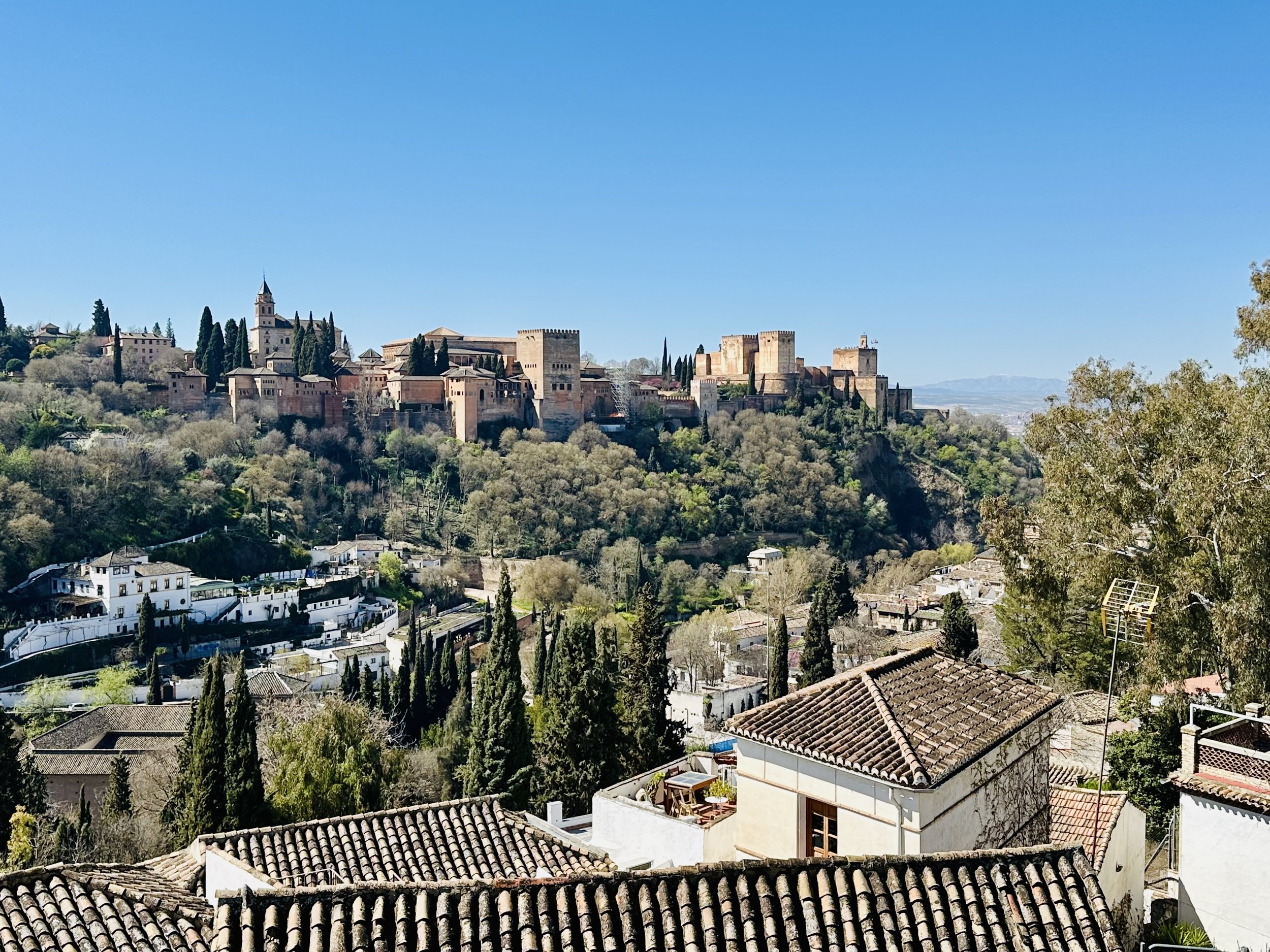
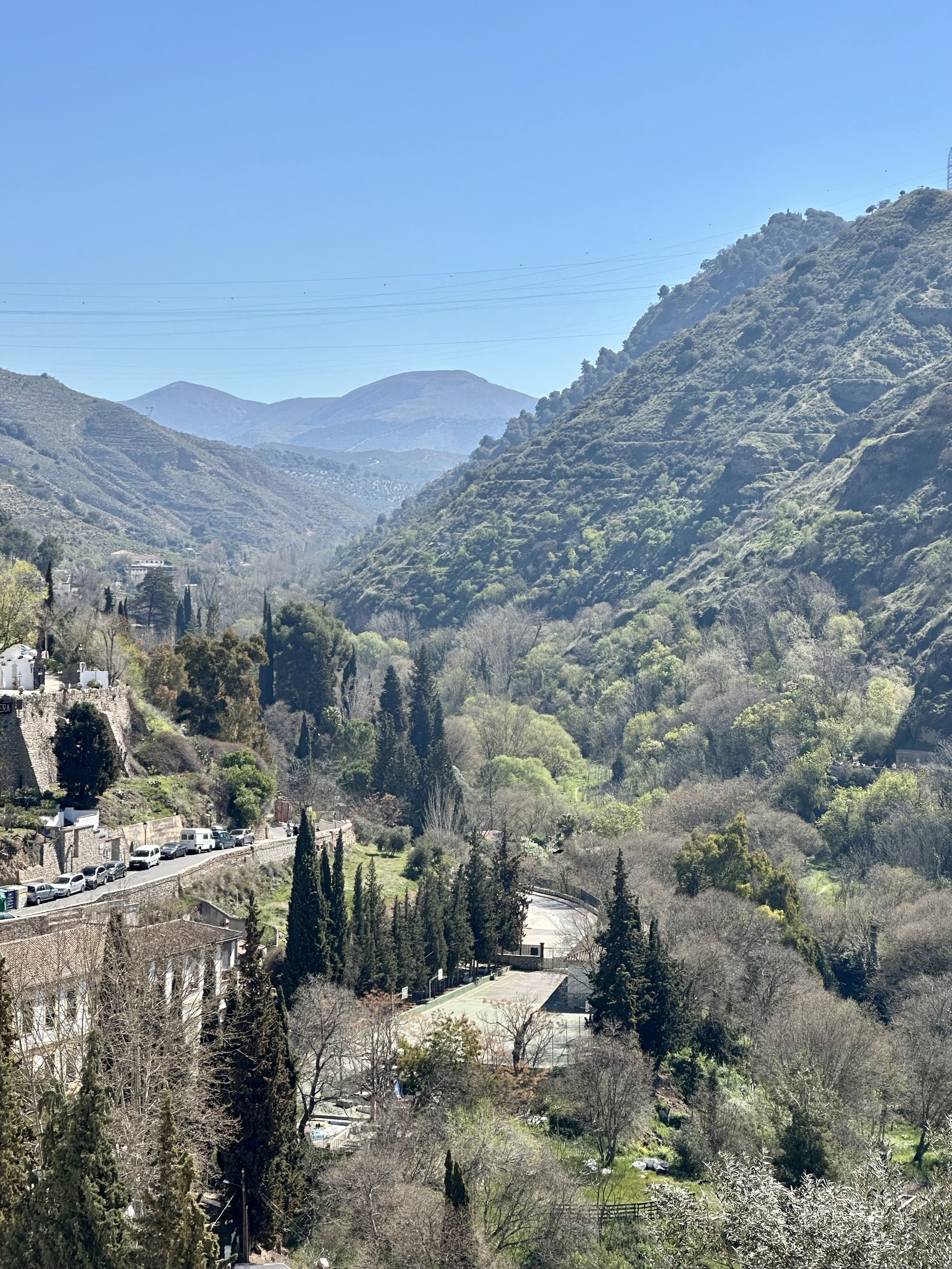
Sacromonte Caves Museum
Sacromonte was more compact and steeper than Albayzín. Most of the white “houses” were the whitewashed facades of cave dwellings. After a challenging series of steep steps, we reached the Museo Cuevas del Sacramonte (Sacromonte Caves Museum). This was an open-air museum with eleven preserved caves, each one showcasing a different aspect of the daily life of the inhabitants. Some things we learned:
Roma people have lived in Sacromonte since the Reconquista. The caves functioned as affordable homes and venues for performing flamenco. A particular style of flamenco called zambra evolved here in Sacromonte.
The caves were small - each with just two or three rooms. They generally stayed cool in summer and warm(ish) in winter. Small windows between caves promoted airflow; body warmth from animals stabled in one cave could help warm humans in the next cave.
The caves were painted with slaked lime. Outside, the white color reflected the sun’s heat. Inside, the lime acted as a disinfectant and dehumidifier.
80% of the dwellings in Sacromonte are caves or cave-houses (caves with additional rooms built in front of them). By the mid 20th-century, there were more than 3,000 inhabited caves.
In 1963, many caves were flooded by heavy rains, and the inhabitants of Sacromonte were displaced. Today, Sacromonte is still a Roma community, though the caves are used more for tourism (inns, restaurants and flamenco shows) than as homes.
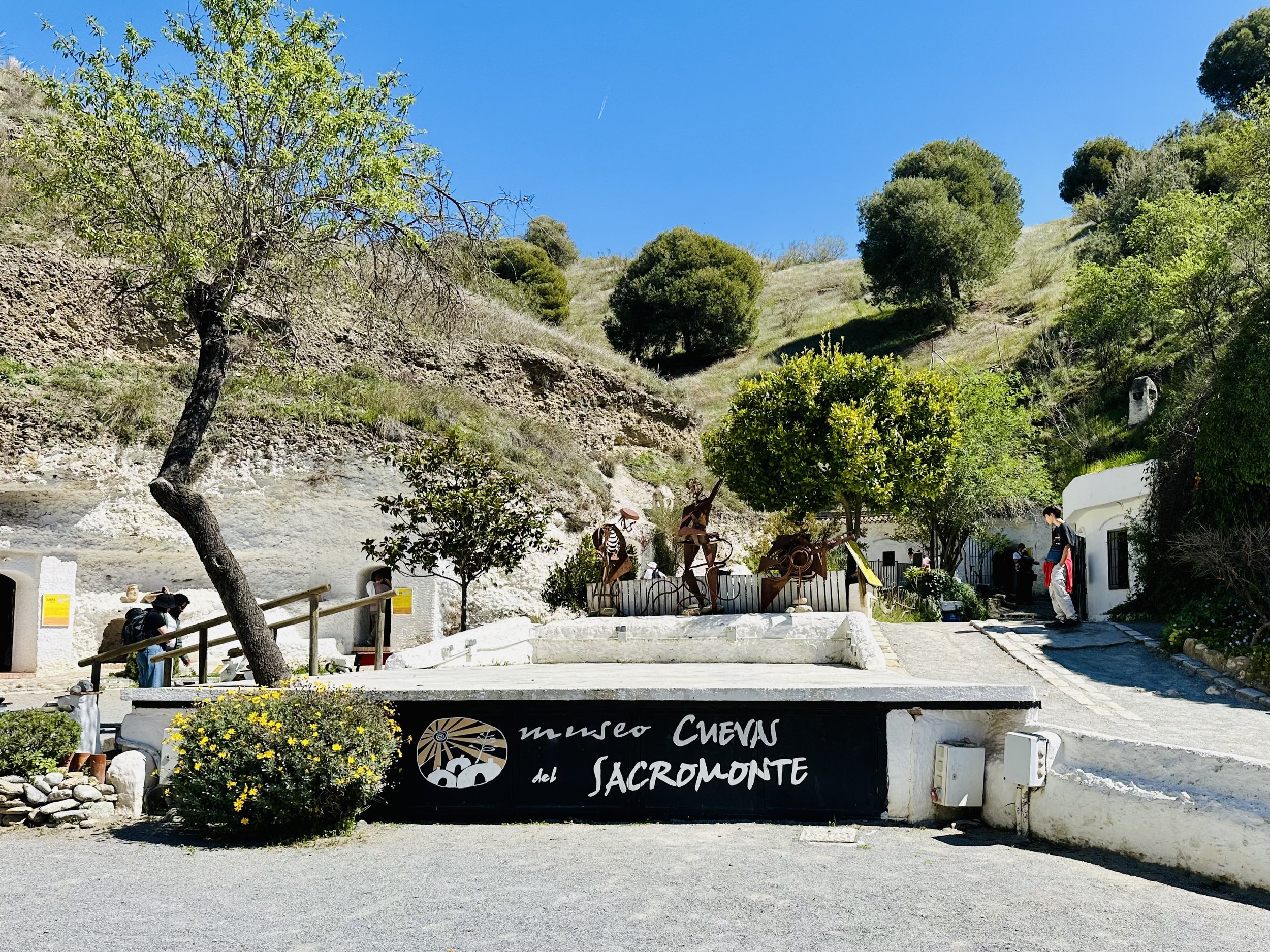
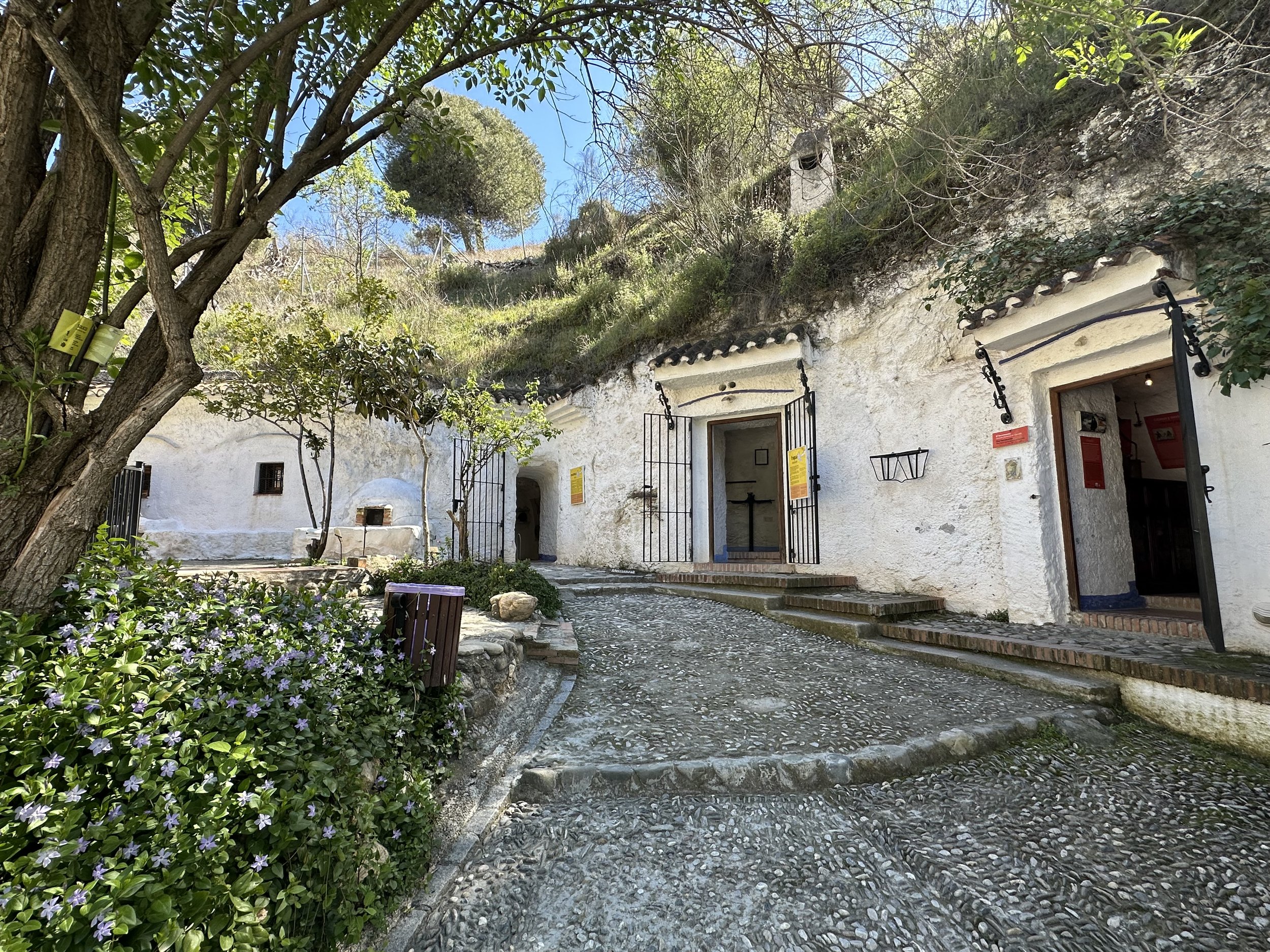


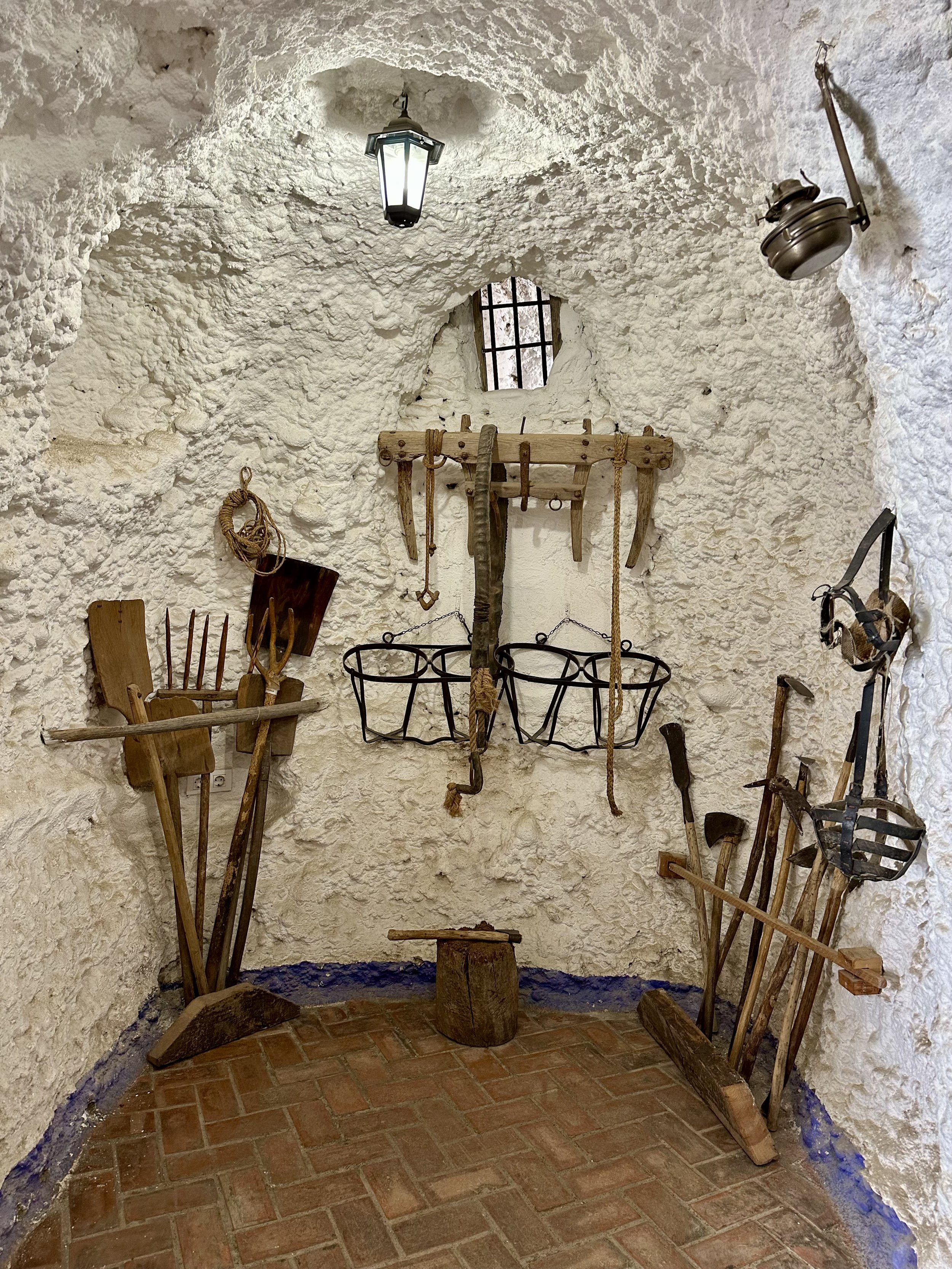
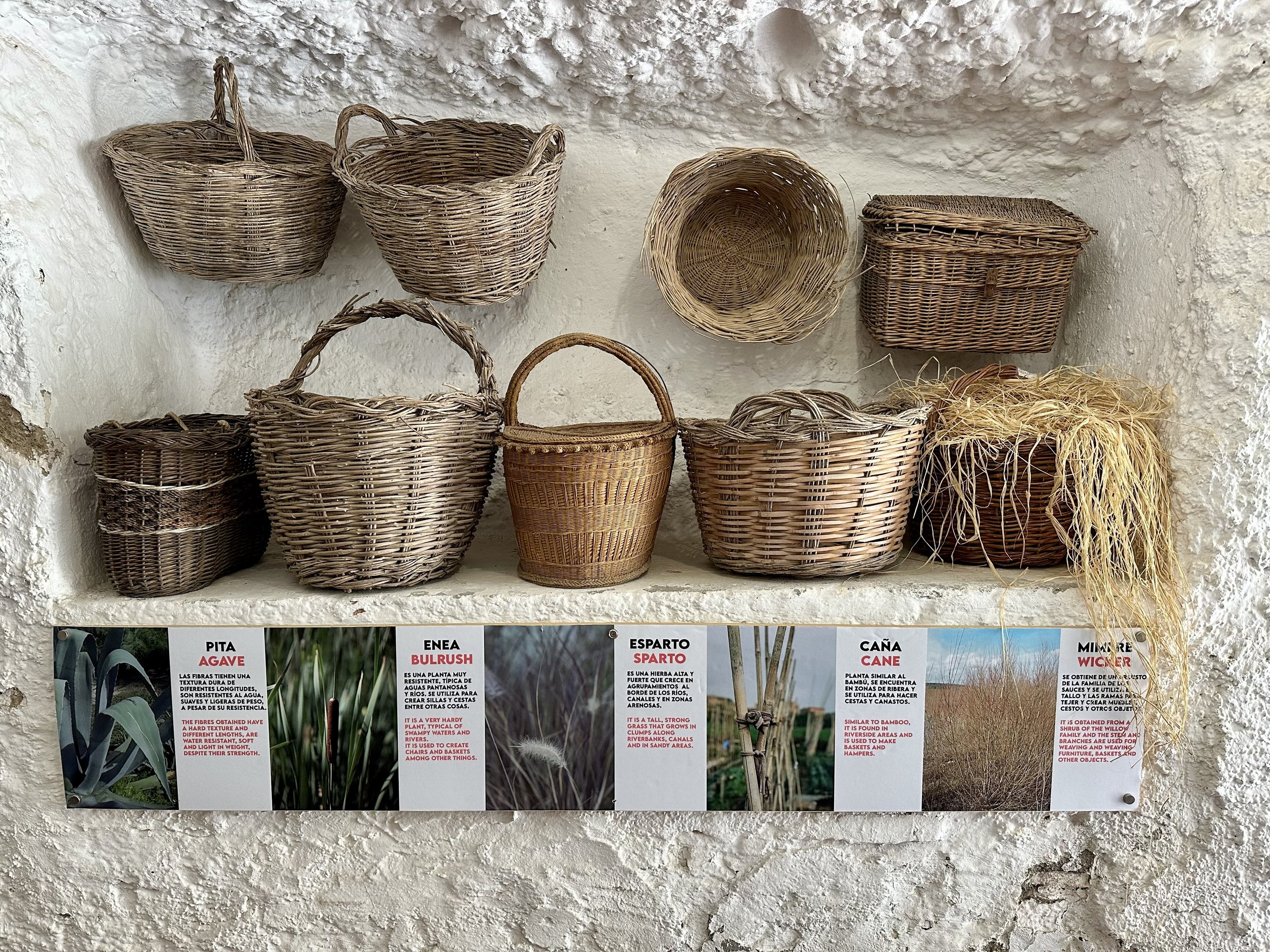
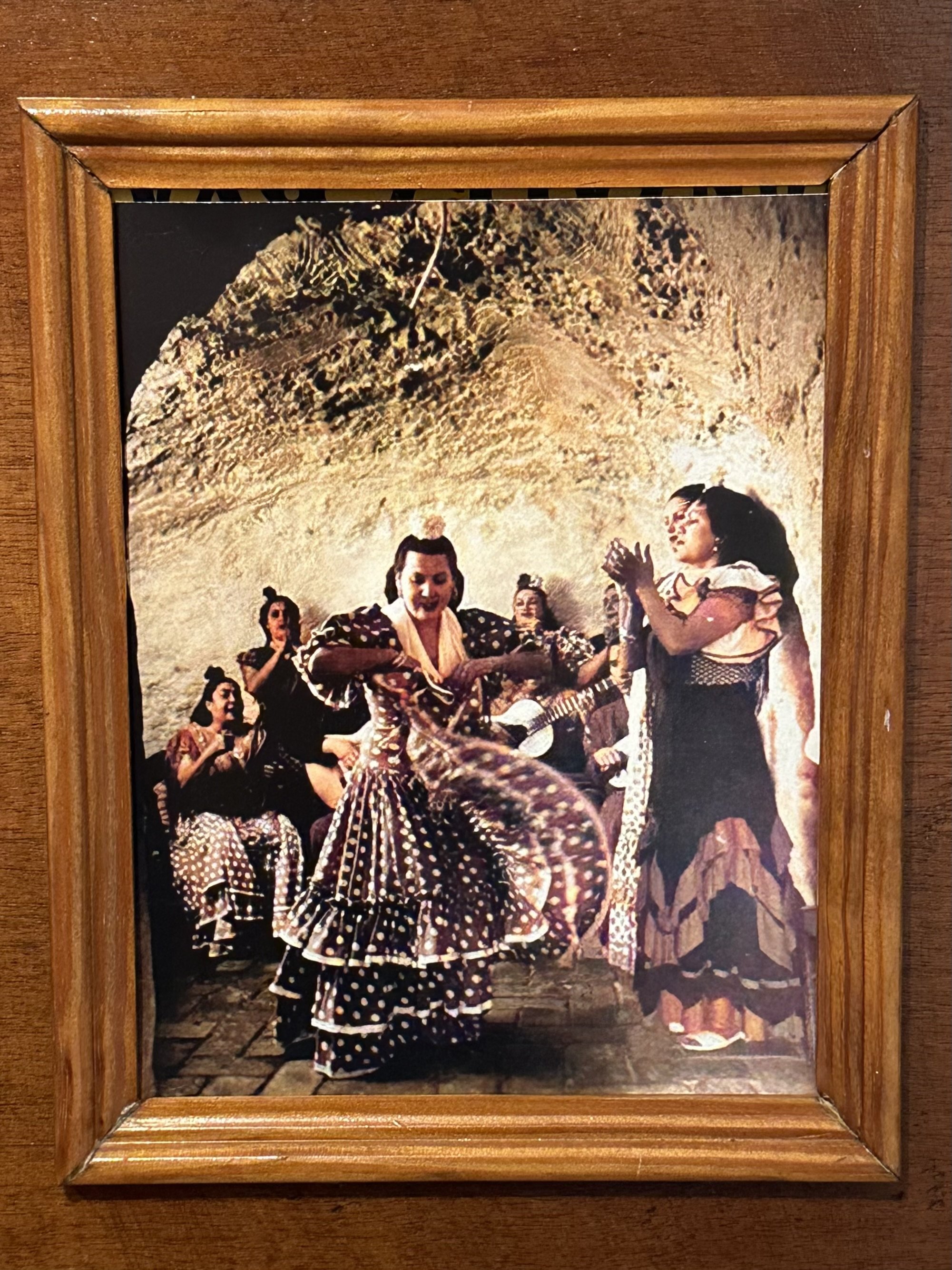
In a small museum near the caves, we learned about the persecution that Roma people have suffered though the centuries, first in Spain from Catholic monarchs, and later across Europe at the hands of the Nazis during World War II. The caves in Sacromonte housed not only Roma, but also mariscos (Muslims forced to convert to Christianity), freed black slaves, and farmers displaced by famine. The area was a refuge for those who were marginalized or persecuted. The last cave had a video montage starring the residents of the Sacromonte caves: children played, parents worked, families ate meals, dancers and musicians performed. There’s some similar footage here.
Before leaving the Caves Museum, we sat for a while in their peaceful lookout area with benches and trees. What was it about the Alhambra that always drew our gaze? The cave residents may have been poor, but they had a million-dollar view.
Sacromonte Abbey
We decided to walk further, to the Abadía del Sacramonte (Sacramonte Abbey), which we had also spotted from the Alhambra. It was more like hiking up a mountain than walking up a hill, but we made it! Unfortunately, the museum there was closed for siesta. So we explored the exterior of the Abbey, peeked at the entrance to the Holy Caves, and enjoyed the magnificent views from the top of the “Sacred Mountain.”
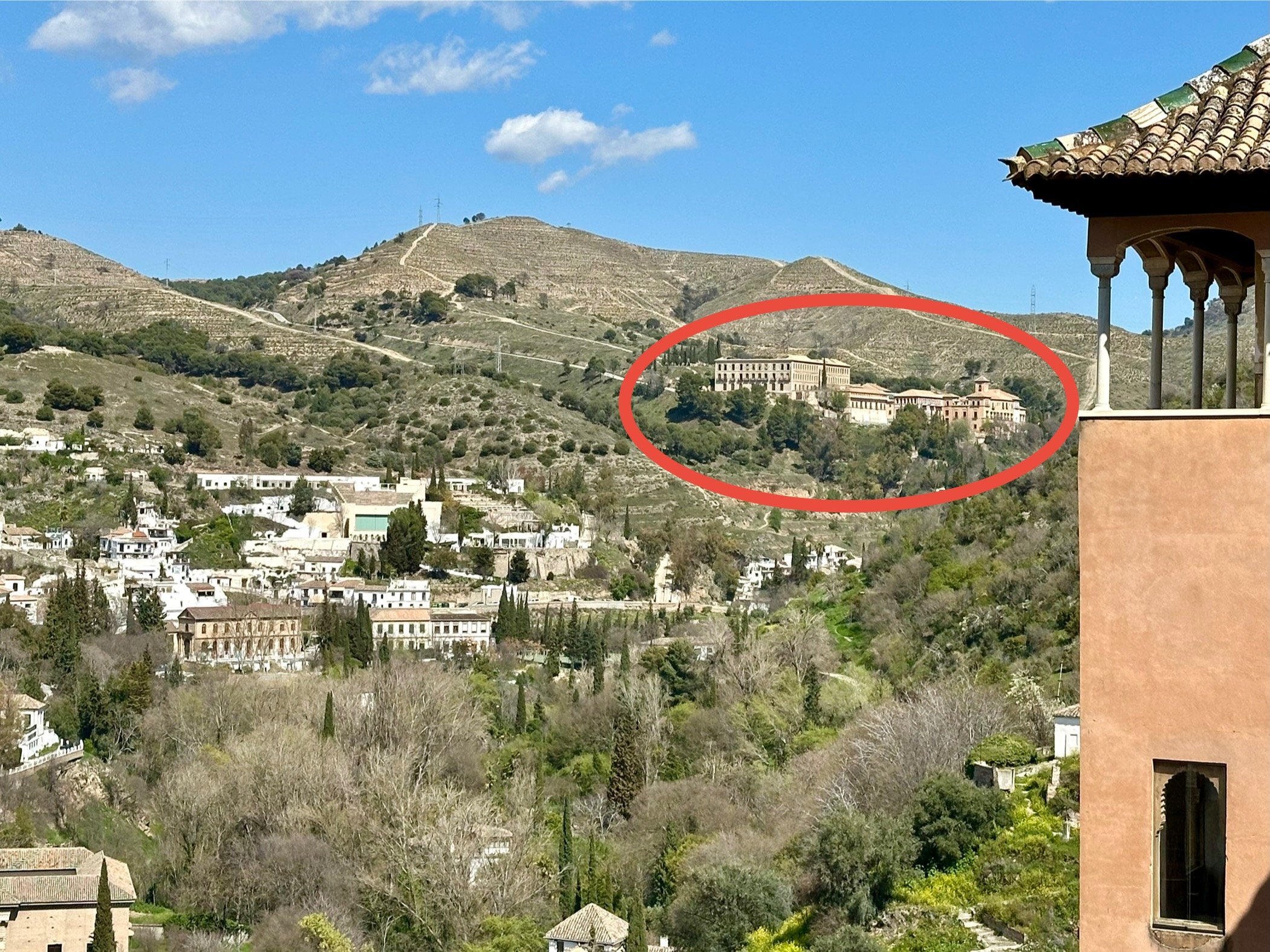
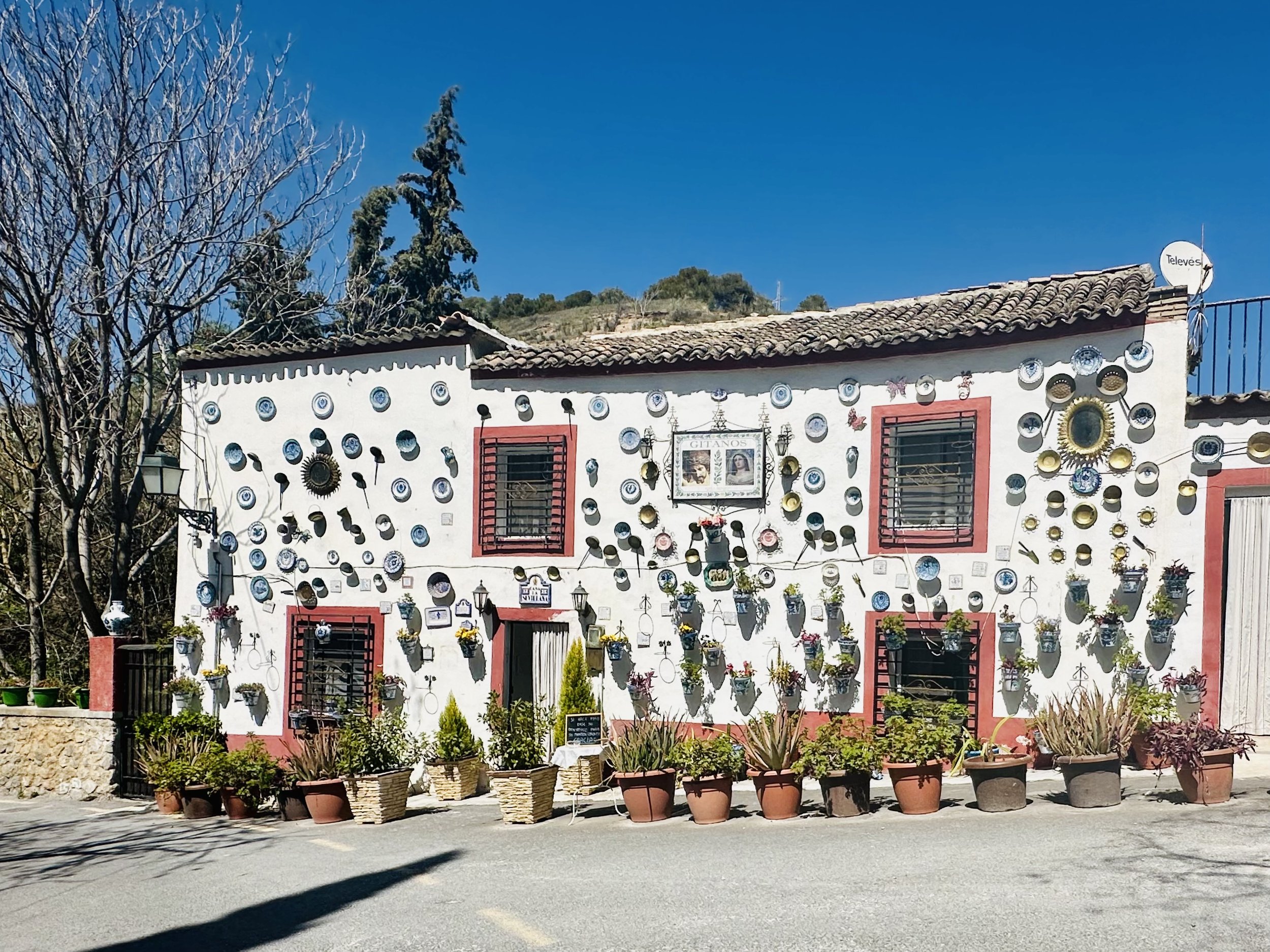
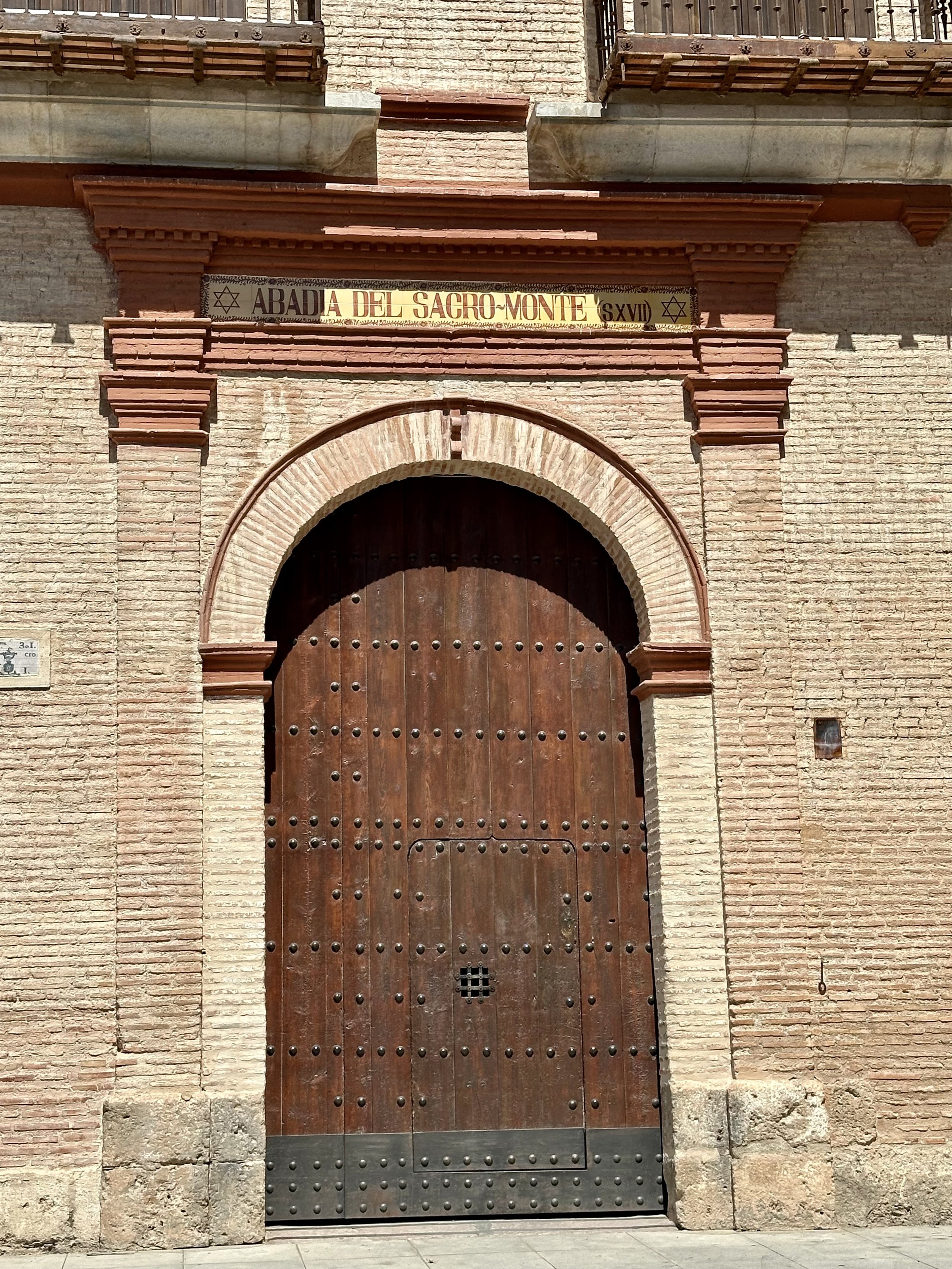
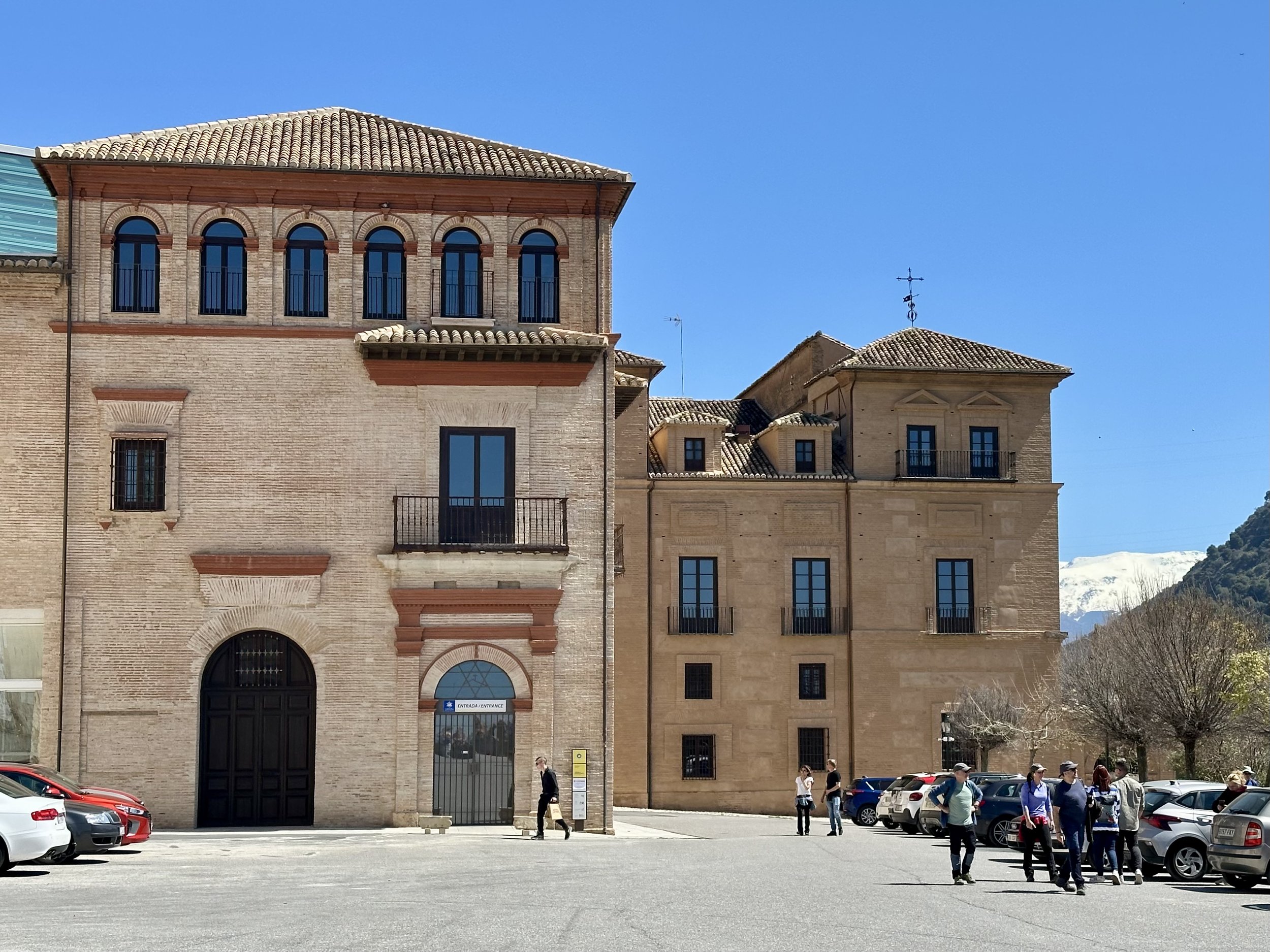
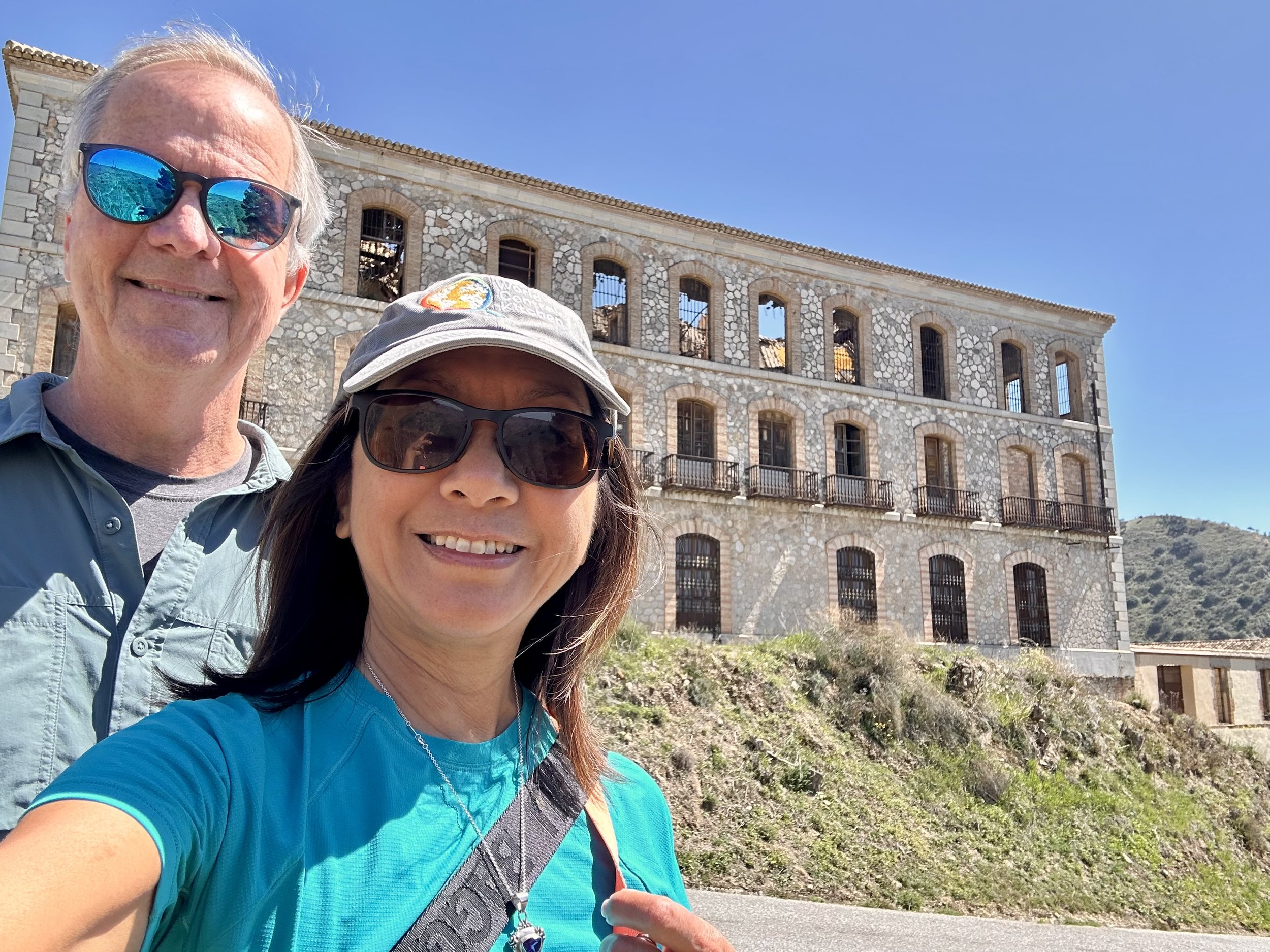
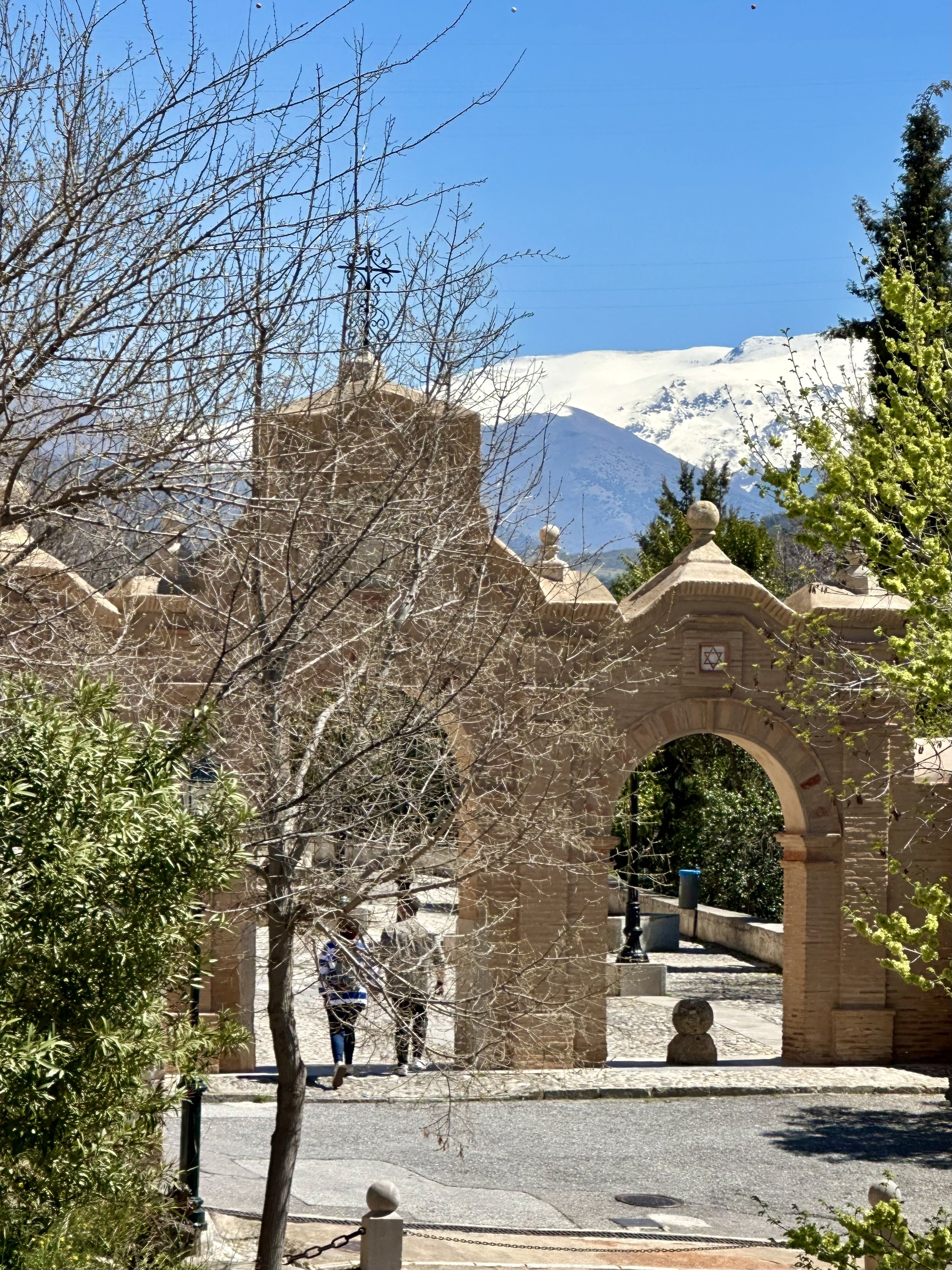
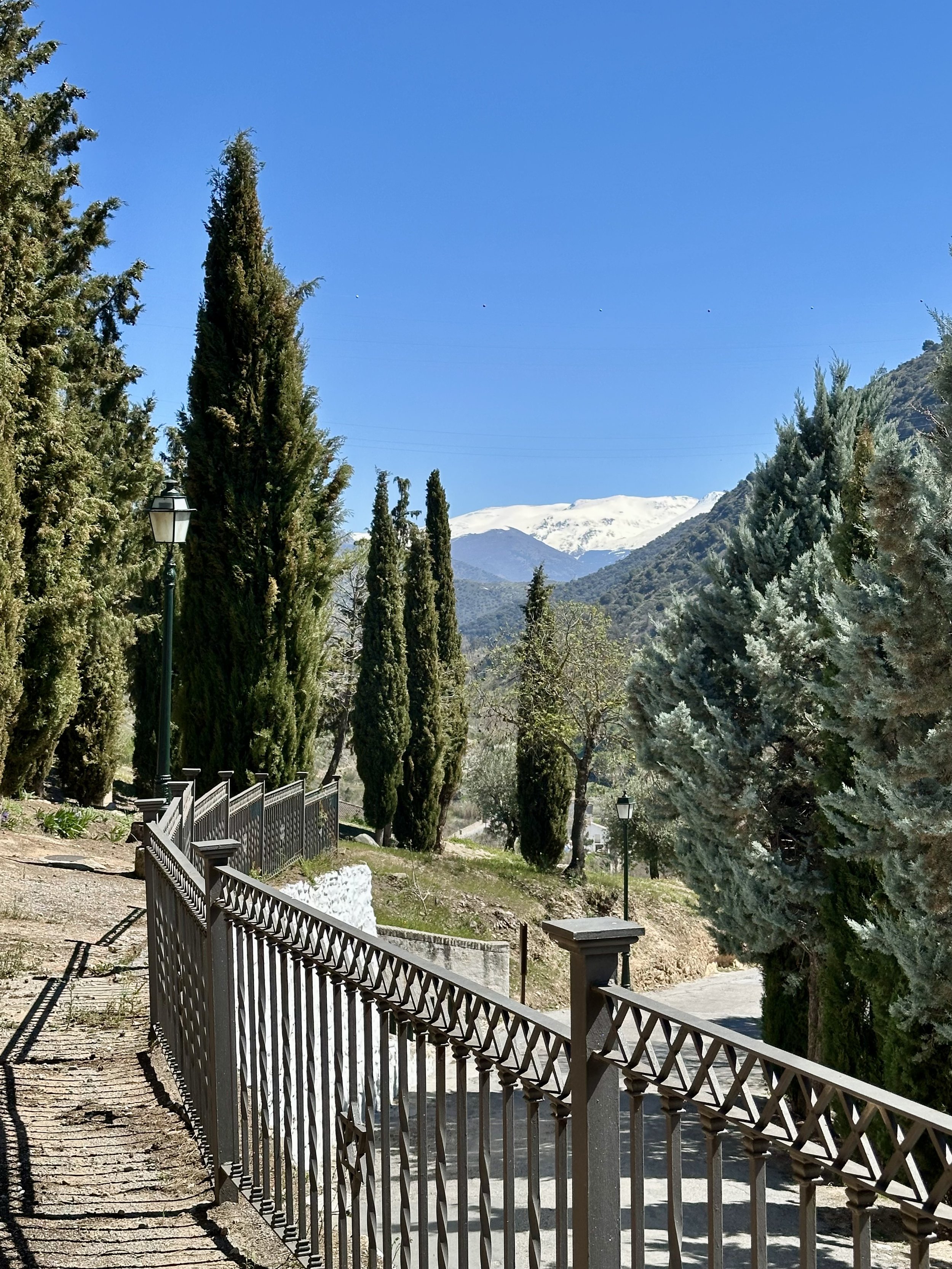
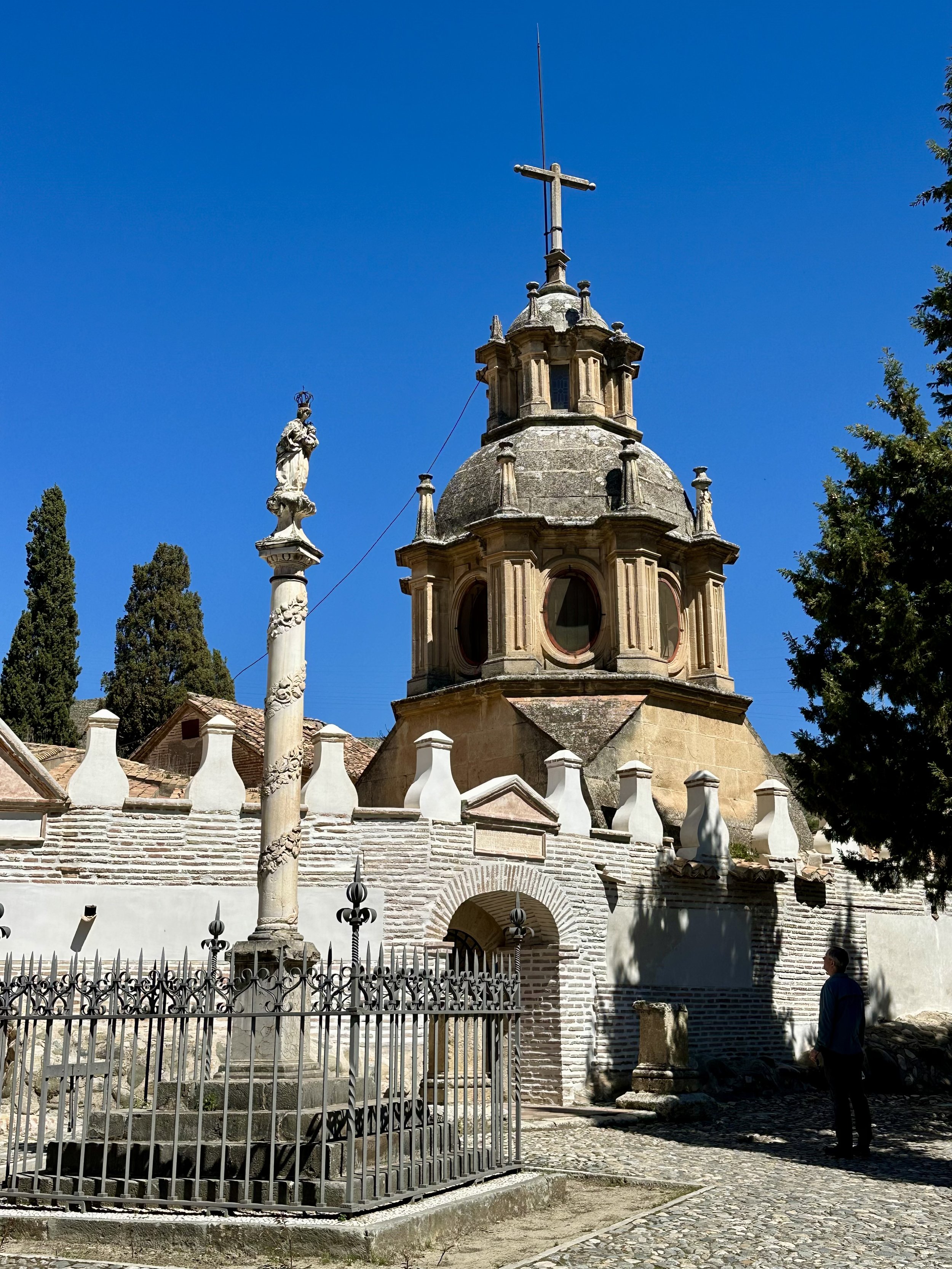
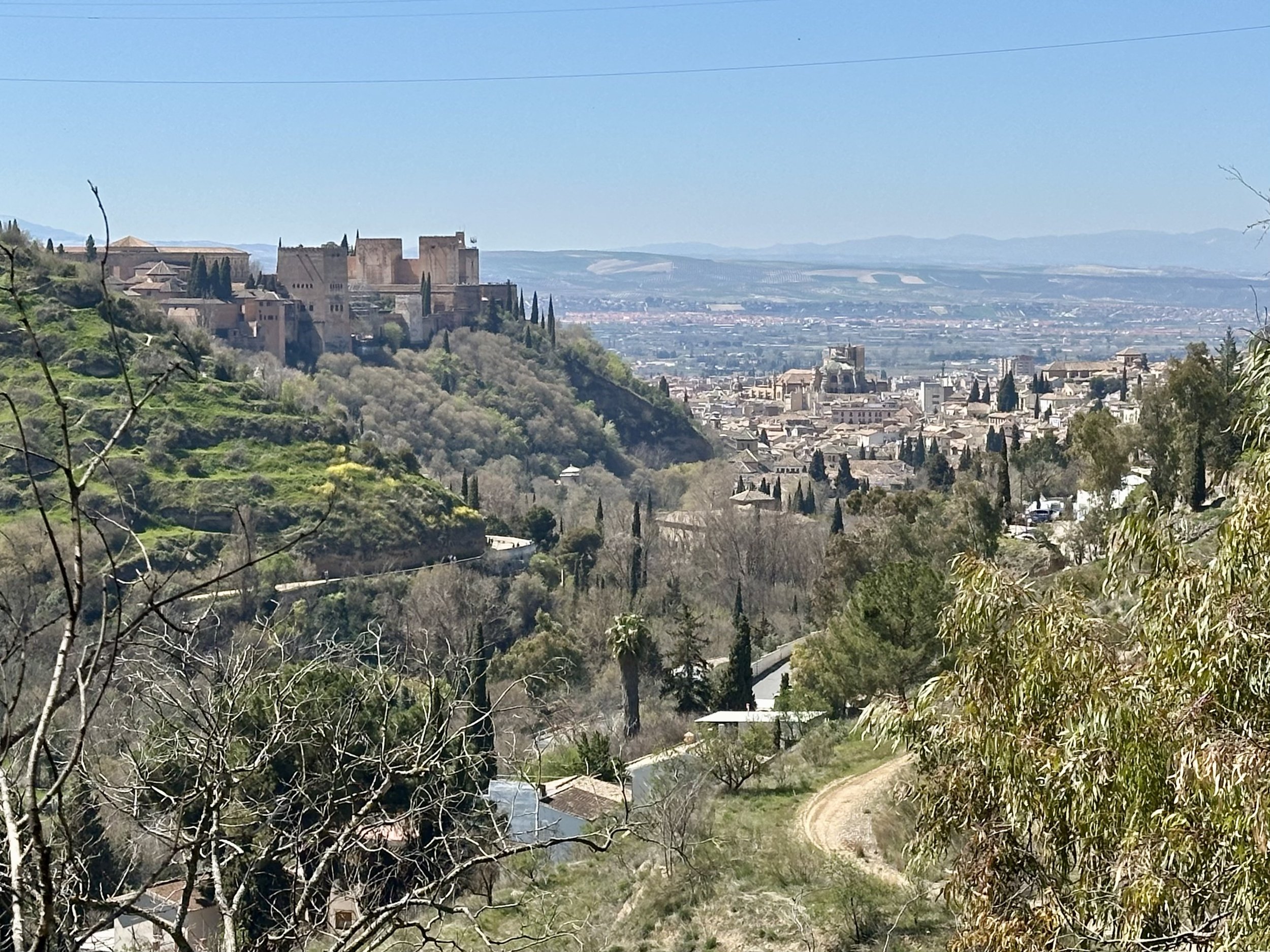
It was a long walk back, first down a hill through Sacromonte and Albayzín, and then up a hill to our hotel in the Alhambra. We tried not to think about how, in just a few hours, we would walk back down into downtown Granada for dinner. Final tally: 11.5 miles walked, and the equivalent of 58 flights of stairs climbed.
*Note: In the United States, we use the terms “Roma” or “Romani” because “gypsy” has negative connotations. In Spain, the term “gypsy” (or in Spanish, “gitano”) is widely used and generally accepted.
